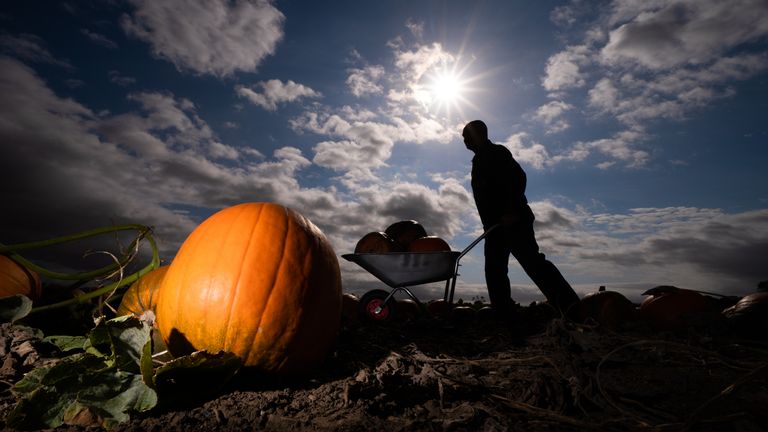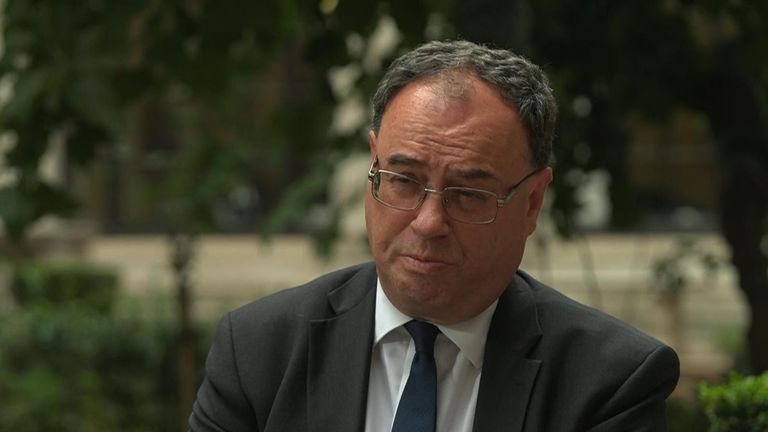Firms are increasingly putting up prices as they pass on soaring costs, according to new figures that are likely to add to fears of a squeeze on household budgets.
Data from the Office for National Statistics (ONS) found 10% of businesses increased their prices in early September, up from 8% in mid-August and 4% in late December last year.
The figures came as the Bank of England’s new chief economist said the “magnitude and duration” of the recent upturn in inflation was proving greater than expected.
Meanwhile new data published on Thursday showed global food prices at a ten-year peak.
It all adds to a cocktail of financial worries for consumers with energy bills looking set to climb further and experts warning of a possible 5% rise in council taxes.
Regulator Ofgem acknowledged that if wholesale gas prices – which this week hit record levels – remain high the price cap on energy bills affecting millions of households, which has only just gone up by 12%, will need to go up again.
Businesses are experiencing surging costs thanks to a series of factors including supply chain strains – such as those caused by a shortage of HGV drivers – as well as recruitment difficulties and wage hikes and the rising global prices of commodities and energy.
The latest data from the ONS, recorded at the start of September, showed 29% of businesses had seen the prices of materials, goods or services bought in the last two weeks increase by more than their normal price fluctuations.
Figures also showed that while 10% of all businesses were passing higher prices on to customers, a larger number of manufacturers (25%) were doing so, as were firms involved in wholesale and retail sales and vehicle repair (23%).
Among companies classed as providing “other service activities” – ranging from professional associations and computer repair to dry cleaning and hair dressing – 22% increased prices.
Latest official data shows consumer price inflation running at 3.2% in August, a nine-year high, and the Bank of England expects it to top 4% later this year.
The broad background to the price spiral is a sudden jolt to higher demand as pandemic restrictions ease which has left supply struggling to keep up.
In answers to a series of questions from MPs published on Thursday, BoE chief economist Huw Pill said that as the pandemic recedes and “the level of composition of global demand and supply normalise” these price pressures should ease.
“But the magnitude and duration of the transient inflation spike is proving greater than expected,” he added.
Elsewhere, an index published by the Rome-based Food and Agricultural Organisation (FAO), which tracks prices for the most globally-traded food commodities, recorded an average of 130 points last month, the highest since September 2011.
The upturn was driven by cereals and vegetable oils and meant that on a year-on-year basis, prices were up by 32.8%.
Earlier, the Institute for Fiscal Studies (IFS), a respected economic think-tank, warned that council tax may have to rise by up to 5% a year as local authorities continue to contend with pandemic-related spending pressures and the government’s new social care policies.
At the same time, analysis by experts at Cornwall Insight suggests that the energy price cap – which affects 15 million households – could go up by another 30% when it is reviewed again next year, thanks to soaring wholesale gas prices.
Separately, a report from the National Grid showed the margin of electricity supply would be tighter this winter than a year ago – while expressing confidence that there was enough capacity to keep the lights on.
However, the grid is likely to have to utilise market alerts calling for some power stations to ramp up tight supply.
Such “margin notices”, which were also used last winter, tend to push wholesale prices up though they are now already close to levels seen at such times of stress.



